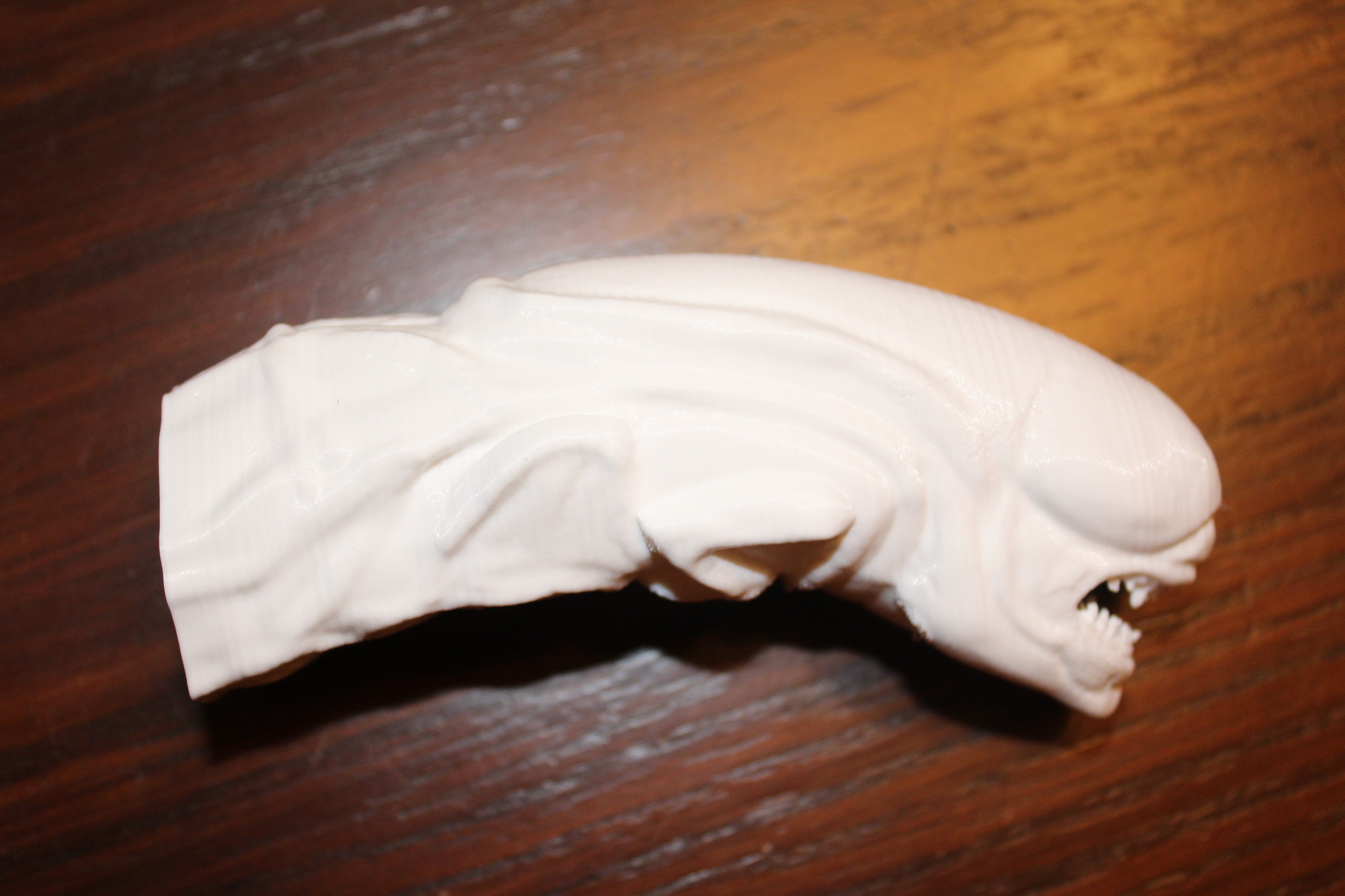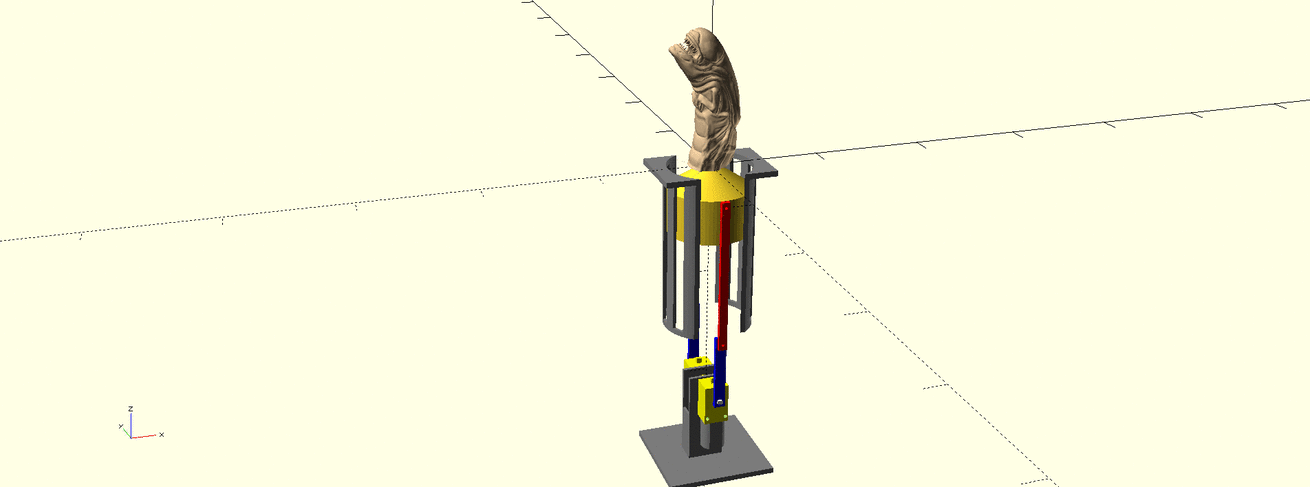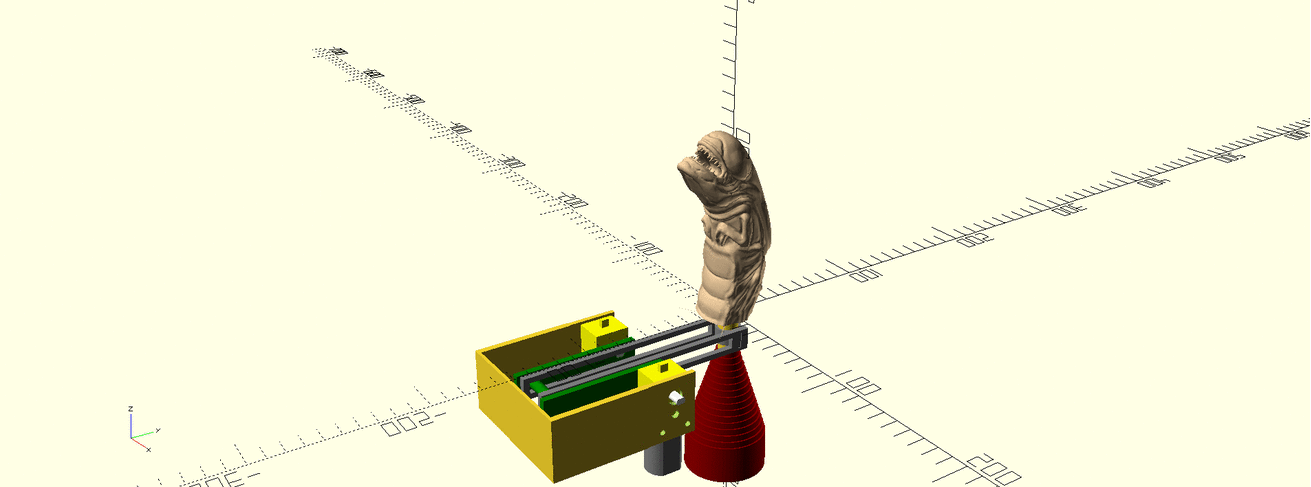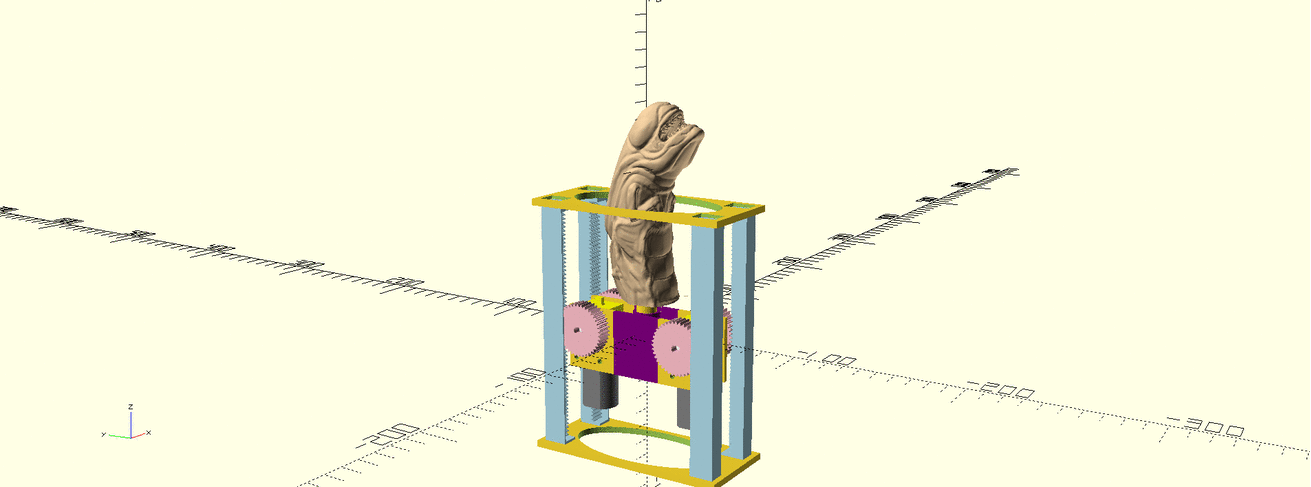
A cuckoo clock wouldn't be very interesting if something didn't pop out at the top of the hour. The obvious choice here is for the Chestburster to act as the cuckoo. This requires some form of linear motion to attain. I briefly entertained the idea of buying a linear actuator but couldn't find anything that was the right speed and price.
So the alternative was using regular rotary motors and designing a rotary-to-linear motion converter. Luckily I have a whole drawer full of cheap DC motors from my work on OpenADR. Next, linear motion is a well-documented subject so designing a converter couldn't be that hard, right?
As it turns out, it can. I am by no means a mechanical engineer. My degree and job are in computer/software engineering, so I had a great deal of trouble designing a linear mechanism I was satisfied with. I also wanted to avoid complex control electronics, so I wanted a design that produced reciprocating motion. This would let me to use a basic MOSFET to control the motor in a single direction along with a limit switch to detect a full stroke from the cuckoo.

Naturally, I chose to use a piston mechanism, most commonly used in cars to convert linear motion to rotary motion. The motor turns a linkage arm which then forces the piston (in my case the Chestburster) up and down a guide channel. The direction the motor is spinning doesn't matter and a limit switch at the bottom of the guide would detect when the piston is fully retracted.

I got as far as designing the whole mechanism for 3D printing before deciding to scrap the it. The large number of linkages added unnecessary complexity and I was worried about the arms bending or snapping. Additionally, with the length of the guide added to the lengths of the arms, the whole mechanism was too long to fit in the depth of a human sternum and therefore the mannequin.

My next thought was to use a Scotch yoke mechanism. It's much simpler, shorter, and wouldn't require multiple axles to be added for assembly. The red part at the bottom of the design is a telescoping tube assembly to help reduce the depth of the design. I got as far as printing and assembling the mechanism (minus the telescoping tubes). Unfortunately, the design broke pretty much right out of the gate. The slot in the yoke requires low friction to work properly and the friction of the PLA on PLA proved too much. The axle going in the slot snapped off far too easily.

So with my previous two attempts failing, I decided to eschew reciprocating motion for something simpler. I have a few spare L9110s motor controllers and can afford to use one if it makes the mechanical design easier. So I opted for a rack and pinion system. This is essentially just a linear gear being driven by a rotary gear. By mounting the motors on the carriage within four racks, simple and constrained linear motion is achieved. This also allows for the depth of the mechanism to be equal to the height of the Chestburster. There are also plenty of rack and pinions available on Thingiverse and so I found one to use for my system.
 Keith Elliott
Keith Elliott
Discussions
Become a Hackaday.io Member
Create an account to leave a comment. Already have an account? Log In.